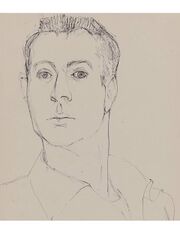Ballpoint ink
Jump to navigation
Jump to search
Description
Though patented in 1888, ballpoint pens only became popular in 1945 after a viscous, smooth-flowing ink was formulated by Franz Seech in California. This ballpoint ink had a drying oil mixed with a dye (40-50%) and resin. Drying oil inks cured when exposed to air. In the 1950s, fast drying glycol inks were introduced which cured by solvent evaporation. Since that time many different formulations have been used for ballpoint inks; components may include surfactants and plasticizers. Some inks are sensitive to solvents and may contain fugitive dyes.
Synonyms and Related Terms
ball point ink; ball-point ink
Risks
Some formulations of not lightfast.
Physical and Chemical Properties
Many are soluble in alcohols and aromatic solvents.
Resources and Citations
- G.S.Brady, Materials Handbook, McGraw-Hill Book Co., New York, 1971 Comment: p. 410
- Hermann Kuhn, Conservation and Restoration of Works of Art and Antiquities, Butterworths, London, 1986
- Book and Paper Group, Paper Conservation Catalog, AIC, 1984, 1989
- Random House, Webster's Encyclopedic Unabridged Dictionary of the English Language, Grammercy Book, New York, 1997
- The American Heritage Dictionary or Encarta, via Microsoft Bookshelf 98, Microsoft Corp., 1998
